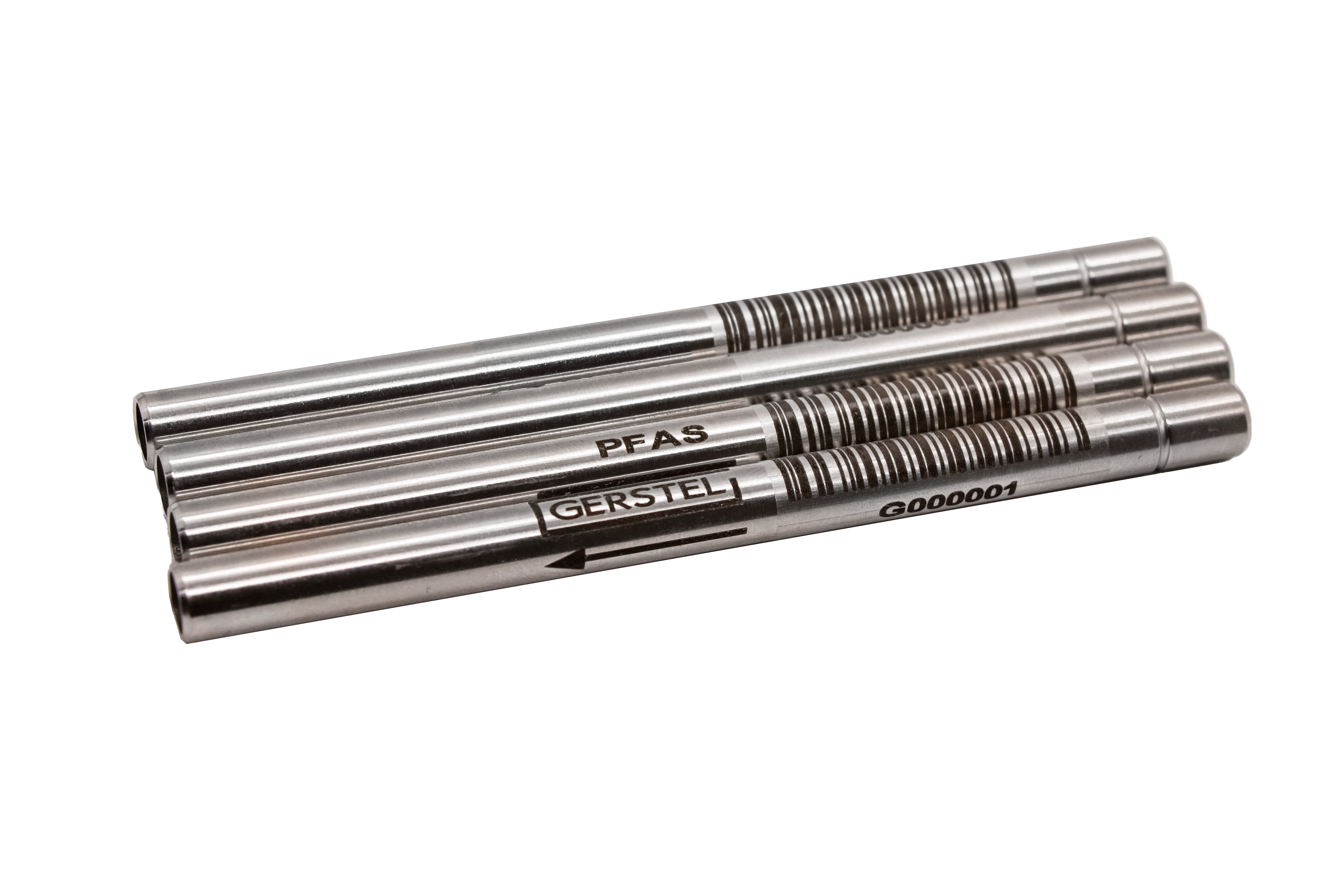Pefluoroalkyl substances (PFAS) are a known issue for drinking and surface waters. PFAS have been used to make fire-fighting foams and water-resistant coatings since the 1950’s. These compounds do not break down naturally, and are persistent in the environment. Sometimes they are called ‘forever chemicals’ because they accumulate in water, fish, and animals (including humans). PFAS have been the topic of movies, like Dark Waters, and in water PFAS is regulated by the US EPA, with chemical analyses outlined in methods such as 535 and 537 and numerous state versions of those methods.
 For air, either outside air from smoke stacks or indoor air in buildings and vehicles, PFAS are also present. For example, in your home you likely have waterproofed coats or non-stick coatings on cookware, and researchers are now turning their focus to PFAS in air as well as water for this reason. Countless pieces of Teflon (a source and sink for PFAS) spread around many rooms. All of these things can emit PFAS or PFAS breakdown products into the air.
For air, either outside air from smoke stacks or indoor air in buildings and vehicles, PFAS are also present. For example, in your home you likely have waterproofed coats or non-stick coatings on cookware, and researchers are now turning their focus to PFAS in air as well as water for this reason. Countless pieces of Teflon (a source and sink for PFAS) spread around many rooms. All of these things can emit PFAS or PFAS breakdown products into the air.
The driving reason is the same in either air or water: the risks to human health for long-term PFAS exposure, even at very low levels, is not well known and regulators have responded accordingly (EPA recently set a limit for one PFAS species, PFOA, at well below a part per trillion in drinking water). Unfortunately, at levels this low, contamination from the environment and from the sampling equipment is a major issue. The US DOD has said as much, as well as various state agencies, warning scientists to avoid PFAS containing or emitting materials such as Teflon during the full workflow, from sampling to detection.
The contamination situation is severe: scientists have been told to remove Teflon from sampling trains, not wear raincoats, wash new clothing or lab-wear, and even to not eat food with grease-resistant packaging while sampling or analyzing for PFAS. In one case, researchers at the EPA were forced to do sampling in triplicate, as about 1 in 10 samples were found to have PFAS contamination and the results had to be rejected.
GERSTEL has been involved in PFAS in air for about 4 years now, in a partnership with Eurofins Air Toxics Laboratory, and we have developed specialized thermal desorption tubes just for high volume analysis of PFAS. We didn’t stop there – our customers, some of them large companies or agencies, have asked us to produce Teflon free TD tubes (by the thousands!) and reduce or eliminate Teflon in places that the sample might contact. We now offer Teflon-free thermal desorption tubes with fittings made from Nylon to eliminate the gain or loss of PFAS species throughout the workflow.
Leaving Teflon in the instrument introduces “reasonable doubt” and would make the data hard to defend. Removing Telfon helps us eliminate that doubt and increase faith in the data. Although we are the first to remove Teflon and related materials from our consumables and sample flow path, we will not be the last. Agilent and others have already done this for LCMS-based water analysis – logically, for PFAS in air the path will be the same. Contact your instrument manufacturer for information about where Teflon and related polymers may be in their consumables and instrumentation and ask them to be substituted out for other polymers. In many cases, this is as simple as using Nylon instead of Teflon. Doing is may be inconvenient, but is not impossible and in some cases actually lowers the cost of consumables. PFAS is persistent in the environment, but doesn’t have to be persistent in instruments and consumables.


